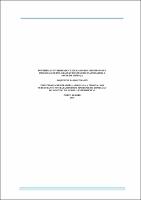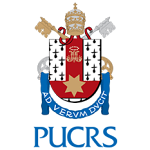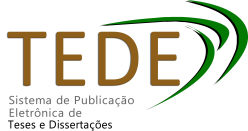| Share record |


|
Please use this identifier to cite or link to this item:
https://tede2.pucrs.br/tede2/handle/tede/6668Full metadata record
| DC Field | Value | Language |
|---|---|---|
| dc.creator | Stivanin, Jaqueline Basso | - |
| dc.creator.Lattes | http://buscatextual.cnpq.br/buscatextual/visualizacv.do?id=K4489673U9 | por |
| dc.contributor.advisor1 | Fiori, Humberto Holmer | - |
| dc.contributor.advisor1Lattes | http://buscatextual.cnpq.br/buscatextual/visualizacv.do?id=K4707095U2 | por |
| dc.contributor.advisor-co1 | Mattiello, Rita | - |
| dc.contributor.advisor-co1Lattes | http://buscatextual.cnpq.br/buscatextual/visualizacv.do?id=K4268598H1 | por |
| dc.date.accessioned | 2016-05-13T13:11:07Z | - |
| dc.date.issued | 2015-09-30 | - |
| dc.identifier.uri | http://tede2.pucrs.br/tede2/handle/tede/6668 | - |
| dc.description.resumo | Objetivos: Avaliar o efeito da fisioterapia respiratória associada ao lavado broncoalveolar com surfactante sobre o exame gasométrico e os aspectos radiológicos, em modelo experimental de síndrome de aspiração de mecônio. Métodos: Doze suínos recém-nascidos com síndrome de aspiração de mecônio induzida experimentalmente foram randomizados em dois grupos, conforme o tratamento a ser feito: grupo controle (submetido a lavado broncoalveolar com surfactante, associado à mudança de decúbito e dose adicional de surfactante); e grupo fisioterapia (submetido aos mesmos procedimentos, adicionados de fisioterapia respiratória com técnica de bag squeezing). Medidas de pressão parcial de oxigênio arterial, pressão parcial de dióxido de carbono arterial e pH foram realizadas antes do tratamento e aos 90 minutos e 150 minutos após o tratamento nos dois grupos. O estudo radiológico foi feito logo após a última aferição da gasometria, antes da eutanásia. A análise estatística utilizou os testes t de Student para amostras independentes, Kolmogorov-Smirnov, ANOVA e Kruskal-Wallis. As diferenças foram consideradas significativas quando p<0,05. Resultados: Houve uma melhora gasométrica após o tratamento em ambos os grupos, sem que tenham ocorrido diferenças entre os mesmos ao longo do estudo. O exame radiológico identificou hiperinsuflação em 46,7% dos lobos pulmonares no grupo que recebeu a fisioterapia e em nenhum lobo do grupo controle (p<0,001). Os outros achados radiológicos não foram diferentes entre os dois grupos. Conclusões: A fisioterapia respiratória não trouxe benefícios adicionais quando associada ao lavado broncoalveolar com surfactante, mudança de decúbito e dose adicional de surfactante, no tratamento da síndrome de aspiração de mecônio induzida experimentalmente em suínos recém-nascidos. | por |
| dc.description.abstract | Objectives: To assess the effect of chest physiotherapy associated with bronchoalveolar lavage with surfactant on the arterial blood gases analysis and radiological findings in an experimental model of meconium aspiration syndrome. Methods: Twelve newborn piglets with experimentally induced meconium aspiration syndrome were randomized into two groups according to the treatment to be given: the control group (which underwent bronchoalveolar lavage with surfactant, associated with change of decubitus and additional dose of surfactant); and the physical therapy group (subjected to the same procedures and added chest physiotherapy with the bag squeezing technique). Measurements of the arterial partial pressure of oxygen, partial pressure of carbon dioxide, and pH were performed before treatment and at 90 minutes and 150 minutes after treatment in both groups. The radiological examination was done soon after the last measurement of gases, prior to euthanasia. The statistical analysis used the Student t test for independent samples, Kolmogorov-Smirnov, ANOVA and Kruskal-Wallis tests. Differences were considered significant at p <0.05. Results: A good response in blood gases analysis was seen in both groups after treatment, with no differences between the groups throughout the study. Radiological examination revealed hyperinflation in 46.7% of lung lobes in the group receiving physiotherapy and in no lobe in the control group (p<0.001). The other radiological findings did not differ between the two groups. Conclusions: Chest physiotherapy did not provide additional benefits, when associated with bronchoalveolar lavage with surfactant, change of decubitus and additional dose of surfactant, in the treatment of experimentally induced meconium aspiration syndrome in newborn piglets. | eng |
| dc.description.provenance | Submitted by Setor de Tratamento da Informação - BC/PUCRS ([email protected]) on 2016-05-13T13:11:07Z No. of bitstreams: 1 TES_JAQUELINE_BASSO_STIVANIN_PARCIAL.pdf: 304085 bytes, checksum: dbdf71d08f11efc3586d015e089b84ce (MD5) | eng |
| dc.description.provenance | Made available in DSpace on 2016-05-13T13:11:07Z (GMT). No. of bitstreams: 1 TES_JAQUELINE_BASSO_STIVANIN_PARCIAL.pdf: 304085 bytes, checksum: dbdf71d08f11efc3586d015e089b84ce (MD5) Previous issue date: 2015-09-30 | eng |
| dc.format | application/pdf | * |
| dc.thumbnail.url | http://tede2.pucrs.br:80/tede2/retrieve/164807/TES_JAQUELINE_BASSO_STIVANIN_PARCIAL.pdf.jpg | * |
| dc.language | por | por |
| dc.publisher | Pontifícia Universidade Católica do Rio Grande do Sul | por |
| dc.publisher.department | Faculdade de Medicina | por |
| dc.publisher.country | Brasil | por |
| dc.publisher.initials | PUCRS | por |
| dc.publisher.program | Programa de Pós-Graduação em Medicina/Pediatria e Saúde da Criança | por |
| dc.rights | Acesso Aberto | por |
| dc.subject | TERAPIA RESPIRATÓRIA | por |
| dc.subject | LAVAGEM BRONCOALVEOLAR | por |
| dc.subject | SÍNDROME DE ASPIRAÇÃO DE MECÔNIO | por |
| dc.subject | SURFACTANTES PULMONARES | por |
| dc.subject | FISIOTERAPIA | por |
| dc.subject | PEDIATRIA | por |
| dc.subject | MEDICINA | por |
| dc.subject.cnpq | CIENCIAS DA SAUDE::MEDICINA | por |
| dc.title | Fisioterapia respiratória associada à terapia com surfactante no tratamento da síndrome de aspiração de mecônio em modelo experimental | por |
| dc.type | Tese | por |
| Appears in Collections: | Programa de Pós-Graduação em Pediatria e Saúde da Criança | |
Files in This Item:
| File | Description | Size | Format | |
|---|---|---|---|---|
| TES_JAQUELINE_BASSO_STIVANIN_PARCIAL.pdf | Texto Parcial | 296.96 kB | Adobe PDF |  Download/Open Preview |
Items in DSpace are protected by copyright, with all rights reserved, unless otherwise indicated.




